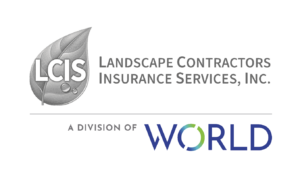 It is essential to understand why recalls occur in an ideal world, every product that we build, buy, or own, would be perfect in every way. The reality, however, teaches us that while perfection is something to strive for in the marketplace, it is often something that is not always attained. While some may be inclined to think that a recall could never affect their company, the truth is that almost all businesses have the potential to find themselves dealing with the complex and costly challenges of a product recall. Recalls can most commonly be characterized as resulting from any of the following events or conditions:
It is essential to understand why recalls occur in an ideal world, every product that we build, buy, or own, would be perfect in every way. The reality, however, teaches us that while perfection is something to strive for in the marketplace, it is often something that is not always attained. While some may be inclined to think that a recall could never affect their company, the truth is that almost all businesses have the potential to find themselves dealing with the complex and costly challenges of a product recall. Recalls can most commonly be characterized as resulting from any of the following events or conditions:
1. Unsafe Products
Products may have an imperfection, deficiency or defect that creates a dangerous situation. As a result, these unsafe products have the potential to cause bodily injury or property damage.
Examples of unsafe products that might trigger a recall event could include:
- Discovery of a faulty switch on an electronic device that could result in electrocution or fire
- The omission of proper gaskets being installed on an icemaker resulting in water leaks post-installation
- Identification of furniture that is determined to be subject to “tipping”— resulting in post-sale actions for the distribution of safety tethers to the identified product owners
2. Manufacturing Defects
Manufacturing defects can potentially result in bodily injury or property damage for those businesses providing component parts to be used in the final assembly of products. A related concern is Impaired Property, which is when the tangible property of others cannot be used, or is less useful because it incorporates a defective product. In this case, a recall event may actually be triggered by the need for the customer to recall the product that incorporates your component item.
Examples that might trigger a recall event could include:
- Manufacture of a power supply used in the electronics industry that is found to be subject to overheating due to an identified flaw in the assembly process
- Medical device manufacturer identifying a post-sale packaging flaw allowing for compromises to sterile product integrity
- Custom metal fasteners used by an OEM are determined to have been manufactured utilizing the wrong grade of steel in a production run
3. Adulteration
Affecting consumable products, adulteration involves the contamination of products and may include microbiological, chemical, allergen or physical hazard, mislabeling, as well as actual or threatened tampering. Such events can be accidental or unintentional, as well as intentional.
Product adulteration can include:
- Biological contamination such as listeria monocytogenes, E. coli, salmonella, noroviruses, etc., created because of deficiencies or omissions in sanitation practices
- Unlabeled allergens and mislabeling of food products (now comprising one of the most significant reasons for food-related recalls)
- Malicious tampering — the wrongful alteration or contamination of a product by anyone, which renders the product unfit or dangerous for its intended use or consumption or to create such an impression to the public
- Recalls associated with malicious tampering can have the potential for added costs associated with loss of profits, brand reputation, and potential loss of significant customers
Examples that might trigger a recall event for adulteration could include:
- Post-production discovery of listeria monocytogenes contamination to processed foods
- Shipment of food products with improper labeling that failed to identify allergen content (e.g., tree nut or dairy product)
- Discovering that a disgruntled employee “may” have tampered with a production line on his last day of employment
Source: Chubb, “Chubb Product Recall Insurance Brochure” https://www.chubb.com website. Accessed August 22, 2021. https://www.chubb.com/content/dam/chubb-sites/chubb-com/us-en/business-insurance/product-recall/Product_Recall_Insurance_Brochure_07-21_ADA.pdf
© Copyright 2021. All rights reserved. This content is strictly for informational purposes and although experts have prepared it, the reader should not substitute this information for professional insurance advice. If you have any questions, please consult your insurance professional before acting on any information presented. Read more.
